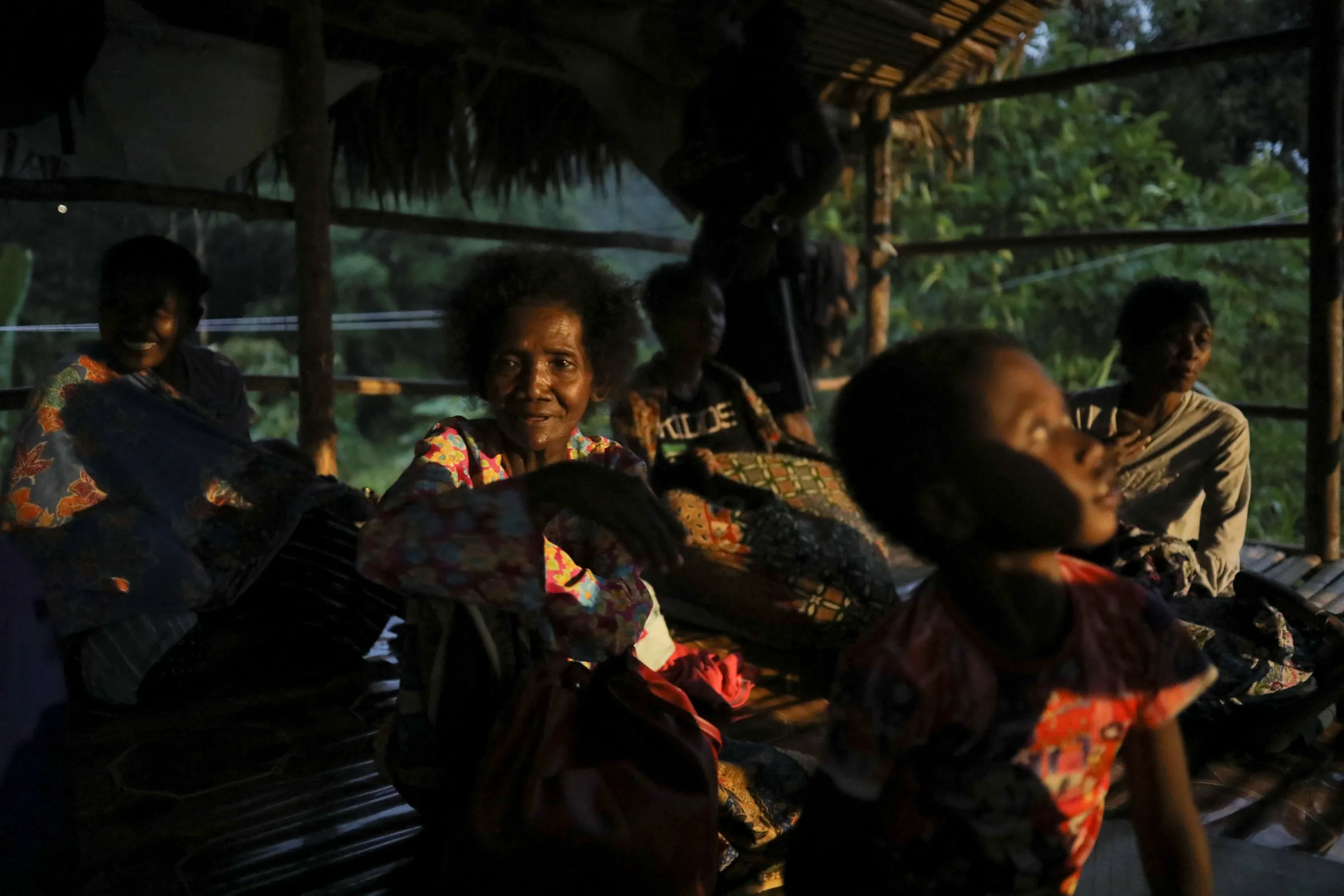Indigenous forest peoples can finally control nature finance

A Batek indigenous woman, spends her evening in a hut along with other indigenous people, at the fringe of Malaysia's National Park in Gua Musang, Kelantan, Malaysia, May 30, 2022. REUTERS/Hasnoor Hussain
At COP30, Brazil will launch the Tropical Forest Forever Facility to fund communities on the frontlines of the nature crisis.
Sonia Guajajara is the Minister of Indigenous Peoples of Brazil and Juan Carlos Jintiach is Executive Secretary Global Alliance of Territorial Communities (GATC).
Long before conservation became a global concern, Indigenous peoples and local communities lived in balance with nature. For us, tropical forests are not only carbon sinks or biodiversity hotspots; they are our home, culture, history and future. Yet despite our proven role as the planet’s most effective forest guardians, our access to climate finance remains minimal and unfair.
As the world grapples with accelerating climate breakdown, biodiversity loss and declining international aid budgets, the need for long-term, sustainable and just financing for tropical forest protection is more urgent than ever.
But business-as-usual finance won't get us there. We need a fundamental shift away from top-down aid models and fragmented charity toward genuine partnerships that recognise our everyday contributions to the global ecosystem, and our unique contributions and capacity to co-design and manage these funds.
For our communities, direct financing is more than just monetary support: it is a vital tool for securing our fundamental rights.
Therefore, at this year’s United Nations Permanent Forum on Indigenous Issues, we are proud to announce a promising step forward. The Global Alliance of Territorial Communities (GATC) is partnering with the Tropical Forest Forever Facility (TFFF), a new financing mechanism that recognises the central role of Indigenous peoples and local communities in protecting tropical forests.
The TFFF aims to mobilize and invest $125 billion from public, private and philanthropic sources, and from its returns, reward forest countries for keeping forests standing.
Crucially, it commits at least 20% of these reward payments to Indigenous peoples and local communities.
This is a historic turning point. For too long, funds have trickled down through slow, fragmented, and culturally disconnected systems. Projects often exclude our consent. Of the $270 million in annual climate-related development assistance, only $46 million reaches our communities directly. Despite managing over 610 million hectares of intact forests globally and protecting 40% of “key biodiversity areas”, we are often treated as beneficiaries, not partners.
That model has failed us and the planet.
Despite these odds, through years of advocacy, we have succeeded in building a robust financial infrastructure and shown that we can lead. In Brazil, the Podaali Fund. In Indonesia, the Nusantara Fund. In Mesoamerica, the Territorial Fund. These funds are transparent, community-driven, and grounded in our knowledge systems. However, they are still underfunded and desperately need more investment to scale.
TFFF builds on these efforts, not by sidelining them but by integrating and supporting them with predictable, long-term resources. This approach makes financing not only more equitable but also more effective.
Under President Lula and the Ministry of Indigenous Peoples, Brazil is leading by example, both in driving the TFFF and additional initiatives such as the reinstated National Policy for Indigenous Territorial and Environmental Management (PNGATI), which returns decision-making and funding power to Indigenous peoples, supporting conservation and cultural survival.
They know, as do we, that the strength of our partnership lies in our ability to participate in every phase of funding and decision-making, with full respect for free, prior and informed consent. When it comes to TFFF, implementation will align with our strategies and be carried out through our own organisations. The mechanism will be flexible and acknowledge the diverse realities of our territories because real climate solutions start with us.
But for it to succeed, the world must step up and invest. The good news is that, unlike repetitive aid payments, sovereign investors will contribute through one-time, balance-sheet-neutral loans, generating returns from ecosystem services and themselves. So, at COP30 and beyond, we urge global leaders to support this model, not just in words, but with real commitments.
For too long, climate and biodiversity financing has ignored our contributions to protecting the ecosystems that sustain life. Clean water, stable rainfall, climate balance, biodiversity - these are not just ecosystem services. They are sacred legacies we’ve protected for generations, often at great cost, including our lives.
We are not just stewards - we are visionaries, builders, and defenders of the future. Finally, a new era of forest finance has begun, one that starts with justice, respect, and co-leadership.
Any views expressed in this opinion piece are those of the author and not of Context or the Thomson Reuters Foundation.
Tags
- Climate finance
- Forests
- Indigenous communities
Go Deeper
Related
Latest on Context
- 1
- 2
- 3
- 4
- 5
- 6
Most Read
- 1
- 2
- 3
- 4
- 5



















